Symbols of Service for Remembrance Day
Each November, military medals get a crisp autumn airing in the hills and across the country. Behind each is a story. Here are four of them.
The military uniform has been replaced by a blazer, and age has relaxed the martial bearing a little, but for Canada’s war veterans, service is symbolized by waterfalls of coloured ribbon and polished metal, decorations awarded by a grateful nation.
Jack Mason
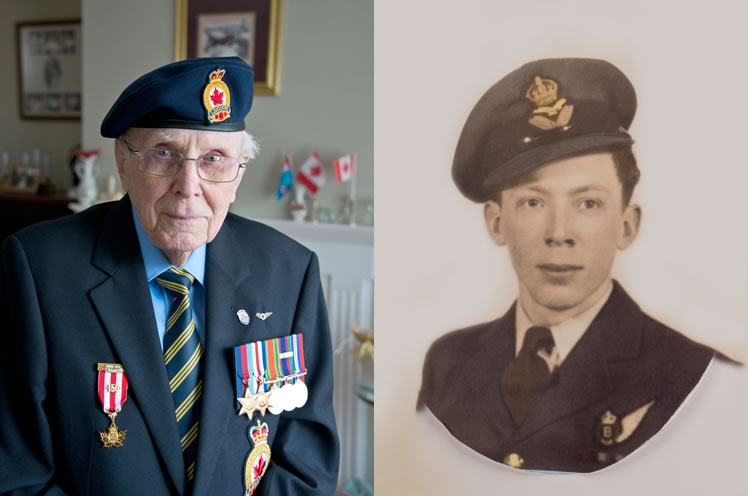
Left: Jack flew 33 missions, dangerous bombing runs that took off from England heading for targets in France and Germany. Photo by Pete Paterson. Right: Flying Officer Jack Mason on his arrival home from World War II.
John Mason, 93, calls himself Jack, but at 19, he was “Junior” to a Royal Canadian Air Force bomber crew flying sorties over Germany during the final years of World War II. The six others in the crew of the Avro Lancaster bomber, which they had dubbed “X-Terminator,” are all gone now, says Jack.
A longtime Shelburne resident, Jack lived in Orangeville in the early 1940s. “When the war started I was just a young fellow and used to watch all the planes flying over – bombers, fighters,” he says. “I thought, ‘I want to be in one of those.’” Shy and with a stutter, he nonetheless hitchhiked to Toronto to enlist. His parents were not pleased.
Jack flew 33 missions, dangerous bombing runs that took off from England heading for targets in France and Germany. The risks were great – flak, enemy fighters, even midair collisions with friendly planes. About half of all air crews were killed during the war. Jack was nearly one of them. A flying officer and air bomber (“bombardier” is an American designation), he treasures a jagged triangle of metal, an ugly fragment of flak that shot through his bombing window and ricocheted around, just as he turned his head.
At the time, combatants received only battle ribbons, narrow bars of differing colours marking each theatre of war or service. Full medals had to be applied for afterward in writing to the Department of National Defence. Long afterward in Jack’s case. He applied for and received his only about a decade ago.
Jack wears his medals on the left breast of a navy jacket below his flyer’s wings. The jacket comes out only for Remembrance Day – and veterans’ funerals. He is not certain which medal is for what. But he can check, proudly, in a binder with photos and explanations of each. The binder also contains shots of long-ago bombers and their crews, and copies of neatly handwritten bombing logs that record times, dates and targets such as rail yards and factories. He compiled the information for his grandchildren, so they might remember his service in a world war.
“I don’t know of any vet who goes about bragging about what they did,” Jack says quietly. “If you did something exceptional, you got the DFC [Distinguished Flying Cross] or DFM [Distinguished Flying Medal]. Medals are just something that tell people you were there.”
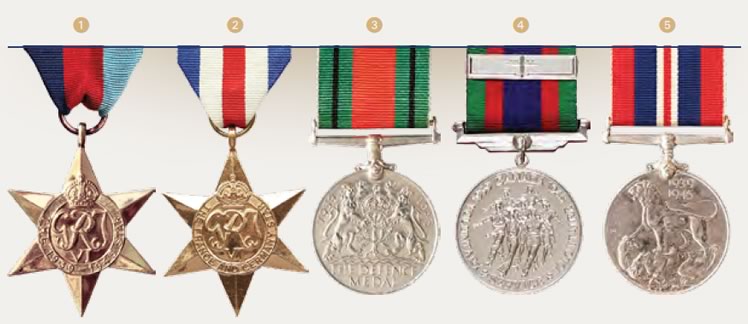
- 1939–1945 Star For air crew with two months’ active service and army and navy personnel with six months’ active service during World War II.
- France and Germany Star For operational service on land in France, Belgium, Holland or Germany between June 6, 1944 (D-Day) and May 8, 1945. “On land? Well, we were in the air, working on the land. Bombing targets. We were part of the invasion of Germany,” says Jack.
- Defence Medal For active service for a specified minimum period during World War II, usually in Britain but also in other areas, such as Hong Kong. “For active duty in one of the theatres of war. I was in the U.K.”
- Canadian Volunteer Service Medal For all who completed 18 months of honourable voluntary active service in the Canadian Forces between September 3, 1939 and March 1, 1947. “For joining up. I don’t think my parents were too happy. They were afraid I’d be killed.” And Bomber Command Bar For all who served with Bomber Command between September 3, 1939 and May 8, 1945 (Victory in Europe Day). Attaches to the Canadian Volunteer Service Medal. “It’s just a wee thing. They gave us that 70 years after the war was over! What kind of deal is that?”
- War Medal For 28 days’ active service during World War II. “For full-time personnel of the Canadian Armed Forces, anywhere.”
Garry Netzke
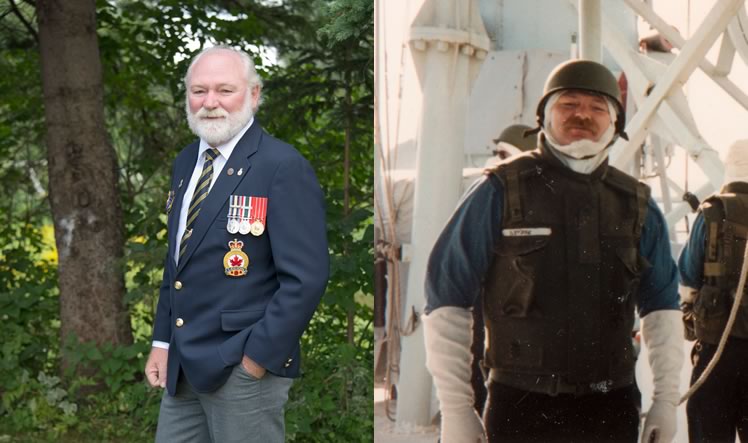
Left: As petty officer, first class, in communications, Garry Netzke served during the Gulf War of 1990 to 1991 on HMCS Terra Nova, a destroyer.Photo by Pete Paterson. Right: Garry Netzke, wearing anti-flash gear, aboard the Terra Nova in the Strait of Hormuz.
Bearded, apple-cheeked and with a jolly smile, Garry Netzke could pass for Santa Claus. Raised on a farm near Shelburne, Garry went on to spend 20 years in the Canadian Navy. “There is nothing to shovel when you’re at sea,” he says, laughing.
As petty officer, first class, in communications, Garry served during the Gulf War of 1990 to 1991 on HMCS Terra Nova, a destroyer. The Terra Nova’s assignment? Running interdiction and escort in the dangerous Strait of Hormuz, where Garry was among the first Canadians to go on active service since the Korean War.
“It was the biggest thing I was involved in, where we were and what we did,” he says. “It was hurry up and wait, but all of a sudden, all hell would break loose. Missiles firing. Scuds. When the Americans opened up, they turned night into day.” But the former sailor won’t admit to being brave. “No more than anyone else,” he says. “You did your job.”
Nonetheless, the 58-year-old is proud of his service and the medals he received. “Absolutely. Medals help. It makes it worthwhile to get recognition for what you did.”
He served Canada on seas all over the world and loved the life, the people, the “band of brothers” camaraderie. After leaving the forces to settle in Halifax, he started a trucking company and raised a family before returning to Shelburne. He still has a boat. Where no one is shooting. “Lake Simcoe,” he says with a hearty laugh.
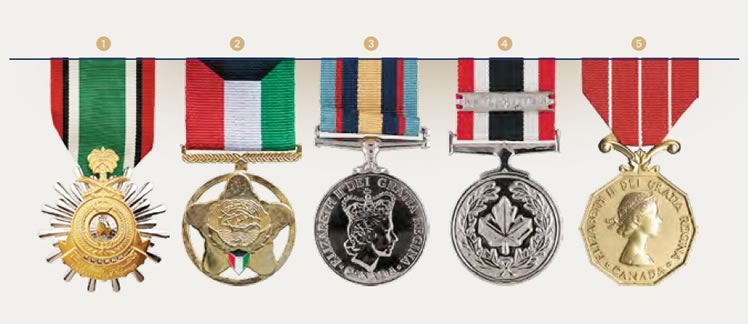
- The Kuwait Liberation Medal (Saudi Arabia) Presented by the Kingdom of Saudi Arabia. “It is not a Canadian medal. You are not allowed to wear this on a Canadian Forces uniform,” says Garry.
- The Kuwait Liberation Medal (Kuwait) Presented by the Kingdom of Kuwait. “I didn’t know it was coming. It just showed up! There are not very many of those around up here [in the hills]. Everyone [in Kuwait] was very thankful.”
- Gulf and Kuwait Medal For at least 30 days’ service in theatre between August 2, 1990 and June 27, 1991. “I was there for the duration. Over a full year. We were always busy – six weeks at sea, two days’ port visit, then right back out again. You worked seven hours on, five hours off, five hours on, seven hours off. After a couple of weeks, you didn’t know if it was night or day.”
- Special Service Medal with NATO Bar For at least 180 days’ service on NATO assignments between January 1, 1951 and October 19, 2004. “I did three tours with the NATO Standing Naval Force: 1979 in the North Atlantic, ready to go to Poland during the Lech Walesa revolutionary era; 1985 in the North Atlantic, when the Iron Curtain was coming down; and 1993 in the Caribbean off Haiti, blockading arms shipments.”
- Canadian Forces’ Decoration (aka Good Conduct Medal, CD) For 12 years of good conduct in the Canadian Forces. “‘For 12 years of undetected crime,’ goes the old military joke.”
Donald Carrick
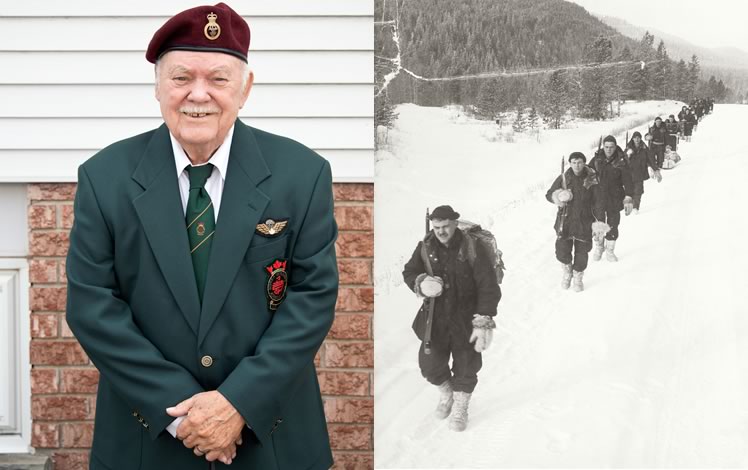
Left: Ten years ago Unit 23 of the Korea War Veterans Association – a unit Donald founded – spearheaded the building of the Wall of Remembrance. Photo by Pete Paterson. Right: Corporal Donald Carrick leads his section on a 1957 Arctic training exercise in Alberta.
The military tattoos on Donald Carrick’s heavy arms are fading, but the memories of his infantry service on the Korean Peninsula are still fresh in the mind of the 84-year-old Orangeville resident. His brother-in-law Frederick Robert Wood, with whom he enlisted, was killed in Korea on December 10, 1951. “Ted” Wood was 21. His photograph and decorations hang on the wall of Donald’s cluttered den, alongside framed displays of his own dog tags, insignia, medals from the Korean government and certificates of appreciation from the Canadian and American governments and the president of South Korea. The Korean conflict is sometimes known as “the Forgotten War.” Not here.
“It was a war, believe you me,” says the 16-year Forces veteran who, after returning from Korea, continued his military career, serving with the parachute battalion of the Princess Patricia’s Canadian Light Infantry. “It was five years after the Second World War. The public was not interested,” he says firmly but sadly. “They called it a ‘police action.’ It’s called ‘the Forgotten War.’ That bothered me. It still does.”
But Donald is not bothered by regrets. “None whatsoever.” He returned to Korea with his son in 1998. “I was talking with a South Korean major-general. He asked me, ‘What do you see different now from when you left.’ He thought I was going to say the economic buildup. I said, ‘The children. When I was here, they were starving, begging for food. There was a lot of sadness. Now I see them running to school, laughing, playing. That made it all worthwhile.’”
At one time, three Canadian Korean War vets belonged to the Orangeville Legion. Only Donald, a private who rose to the rank of sergeant, remains. “I lost a lot of friends, not only there, but since.”
Once a year he attends Remembrance Day ceremonies at the Meadowvale Cemetery in Mississauga. Ten years ago Unit 23 of the Korea War Veterans Association – a unit Donald founded – spearheaded the building of the Wall of Remembrance. On the wall are displayed replicas of the plaques on the graves of Canadians who fell in that long-ago “police action.” The South Korean ambassador, veteran Korean servicemen and “what few who are left” of Donald’s comrades attend the annual ceremony.
At the ceremony, Donald wears his medals. “I’m proud to wear them. They represent my service to my country – and my brother-in-law.”
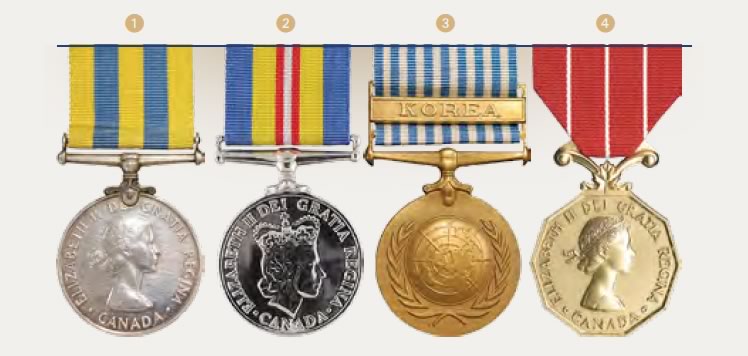
- Canadian Korea Medal For service in Korea between July 2, 1950 and July 27, 1953. “We got it when we got back,” says Donald.
- Canadian Volunteer Service Medal for Korea For volunteers who served in the Korean theatre between June 27, 1950 and July 27, 1954. “They had volunteer medals for the First and the Second World Wars and they debated whether to give one for Korea. It took them 40 years before we got it!”
- United Nations Korea Service Medal For service in Korea under United Nations Command between June 27, 1950 and July 27, 1953.
- Canadian Forces’ Decoration (aka Good Conduct Medal, CD)
Rob Stephenson
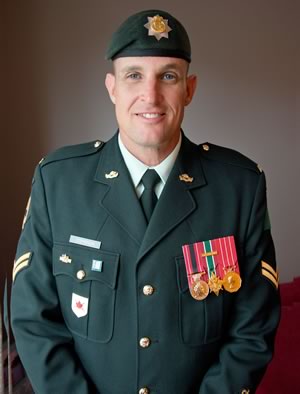
Rob wears his hard-earned medals only at Remembrance Day ceremonies, which he never misses. Photo by Pete Paterson.
Rob Stephenson has strong features, crisp blue eyes – and reconstructed feet. His feet were in boots on the ground with the 3rd Battalion, Royal Canadian Regiment, north of Kandahar city, Afghanistan.
“I’ve just had my third reconstructive surgery,” the former senior corporal, now 46, says without drama. “The bones were completely shattered in my feet. Both feet. I’ve got plates and screws and bones cut out. I was very lucky.”
The cause was a Taliban improvised explosive device (IED). The personnel carrier in which Rob was riding had four inches of armour underfoot. The armour saved his life, but the percussion from the blast destroyed his feet, crushed vertebrae in his back and damaged his hearing. “I have no regrets,” he says. “I volunteered. I was on the battlefield for my country. I knew what I was getting into. There are consequences.”
Medically released two years ago after twelve and a half years in the Forces, Rob is very proud of his military service and misses the action. “Oh god, yes! I loved it. Fighting. Facing the enemy. It’s an adrenaline rush!” A civilian now, on disability, he is re-establishing his life, taking courses in investigation and working toward his real estate licence. His feet are recovering well enough to go walking with three active dogs, one of whom seems big enough to ride on.
After he returned to Canada from hospital in Germany, his medals were presented to him in a ceremony at CFB Petawawa, his regiment’s home base. Are medals enough thanks, given what he has suffered? “Medals are little trophies. Trophies do make you feel good.”
Rob wears his hard-earned medals only at Remembrance Day ceremonies, which he never misses. Still not long out of the action, can he relate to the older vets, warriors from conflicts well before he was born? “Absolutely,” he says without hesitation. “I have a lot of respect for the older guys. It was a different war, but at the end of the day, we are all Canadians who fought for our homeland.”
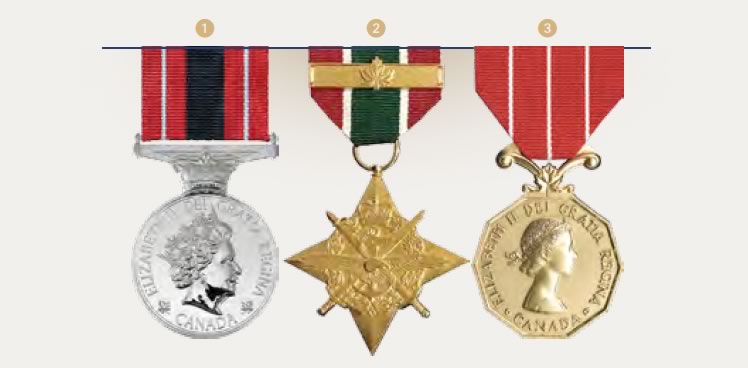
- Sacrifice Medal For those who die as a result of military service or are wounded by hostile action. “For getting wounded on the battlefield. For injuries received while deployed overseas,” says Rob.
- General Campaign Star – South-West Asia (aka Afghan Medal) For at least 30 days’ service with the International Security Assistance Force in Afghanistan between April 24, 2003 and July 31, 2009. “In all forces across the board, you got it if you were in Afghanistan, infantryman or clerk.”
- Canadian Forces’ Decoration (aka Good Conduct Medal, CD) What does “CD” mean? “Ah, good question. It is for 12 years’ good service.
Related Stories
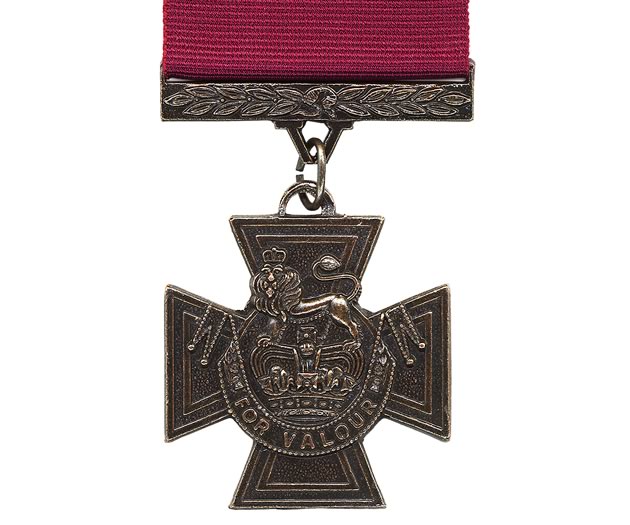
For Valour
Mar 20, 2017 | | Historic HillsThe Victoria Cross was awarded to Canadians until 1972, when separate Canadian awards were created.
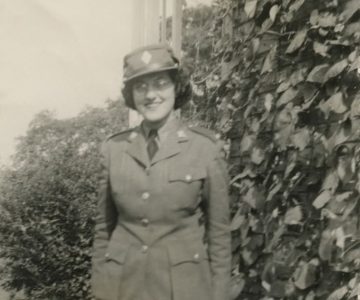
Doris Porter Goes to War
Mar 20, 2017 | | HeritageAs a young woman, the lifelong resident of Caledon served in the Canadian Women’s Army Corps during World War II.
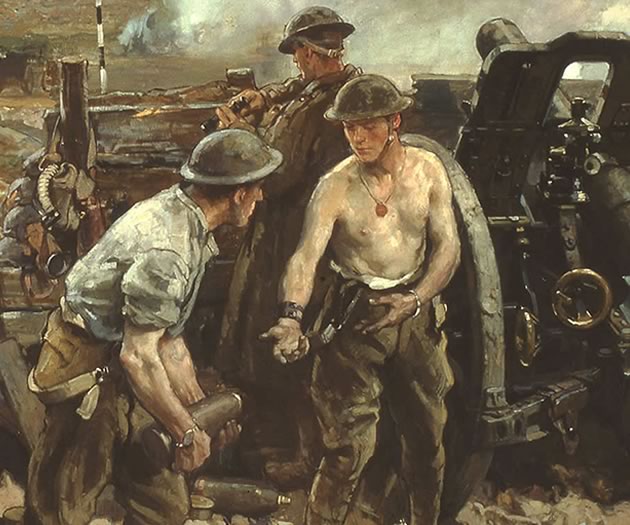
Remembrance of Vimy Ridge
Mar 20, 2017 | | HeritageAmong Canada’s troops at Vimy was a young poet named Christopher George Cook.
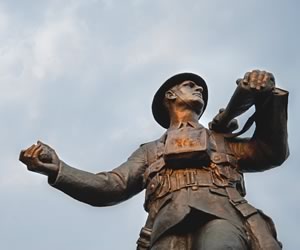
The Homecoming
Sep 11, 2013 | | HeritageTo a 13-year-old Orangeville boy in September 1945, news that the father he hadn’t seen in four years was on his way home from the battlefields of Europe was cause for high excitement.
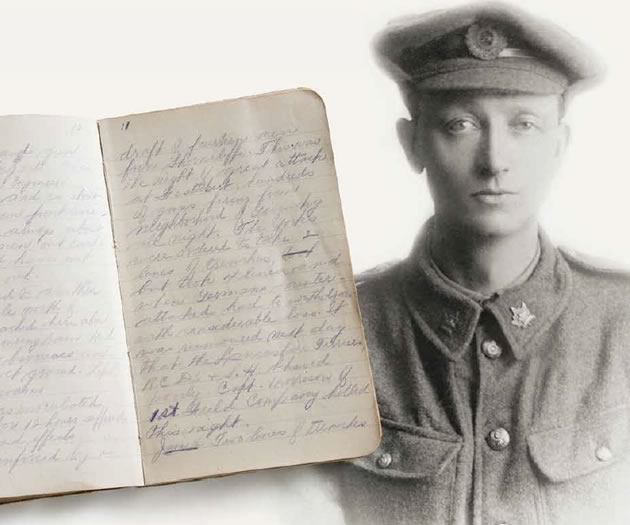
Face to Face with World War I
Sep 16, 2016 | | HeritageCharles Ernest Thomas, private, 3rd Field Company, Canadian Engineers
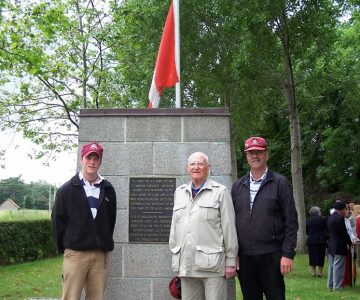
My Grandfather’s War
Sep 11, 2013 | | HeritageThree generations of a Caledon farming family travelled to Europe to retrace the steps of the 1st Canadian Parachute Battalion during WW II.
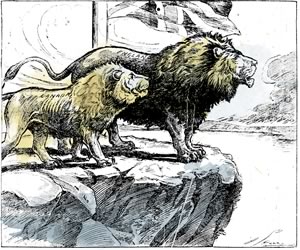
Our Local Press on the Eve of the Great War
Jun 17, 2014 | | HeritageFrom the first week of August onward, war news exploded onto the pages of community papers, filling them almost cover to cover.

A Place Like Home
Sep 11, 2013 | | HeritageFor Canadian boys passing through England during World War I, the Perkins Bull Hospital for Convalescent Canadian Officers offered family warmth and the comfort of “home sweet home,” something all of them desperately needed.
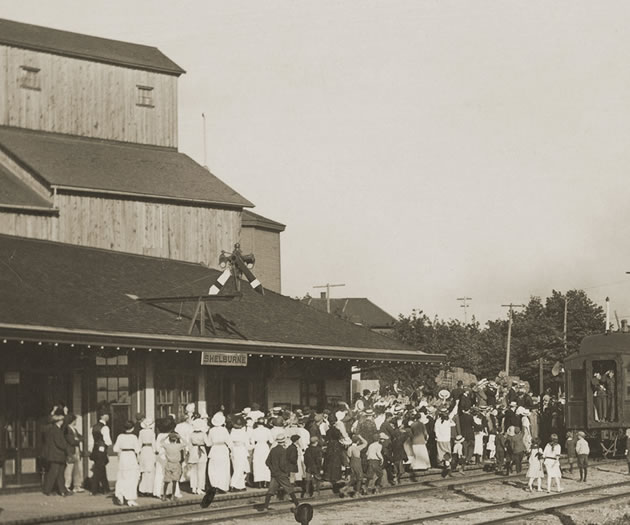
August 1914: The First Goodbyes
Sep 16, 2016 | | Historic HillsAs early as August 7, the word went out to militia units across the country: Enlist as many volunteers as possible.
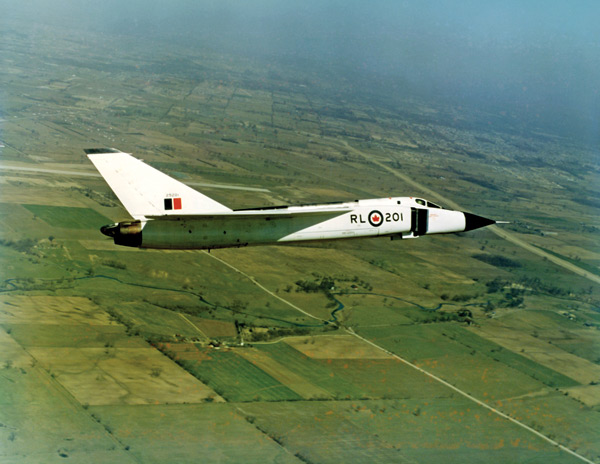
The Day the Avro Arrow Died
Mar 21, 2009 | | HeritageIt’s been 50 years since Black Friday, the day the Avro Arrow was cancelled – and economic disaster spread like wildfire through the hills.








Our condolences to family and friends of veteran Jack Mason, who appeared in this story and who died in October. “I don’t know of any vet who goes about bragging about what they did,” he told us.
Here is his obituary: dodsandmcnair.com/book-of-memories/2437152/mason-john/service-details.php
Tralee Pearce on Nov 11, 2017 at 9:39 am |